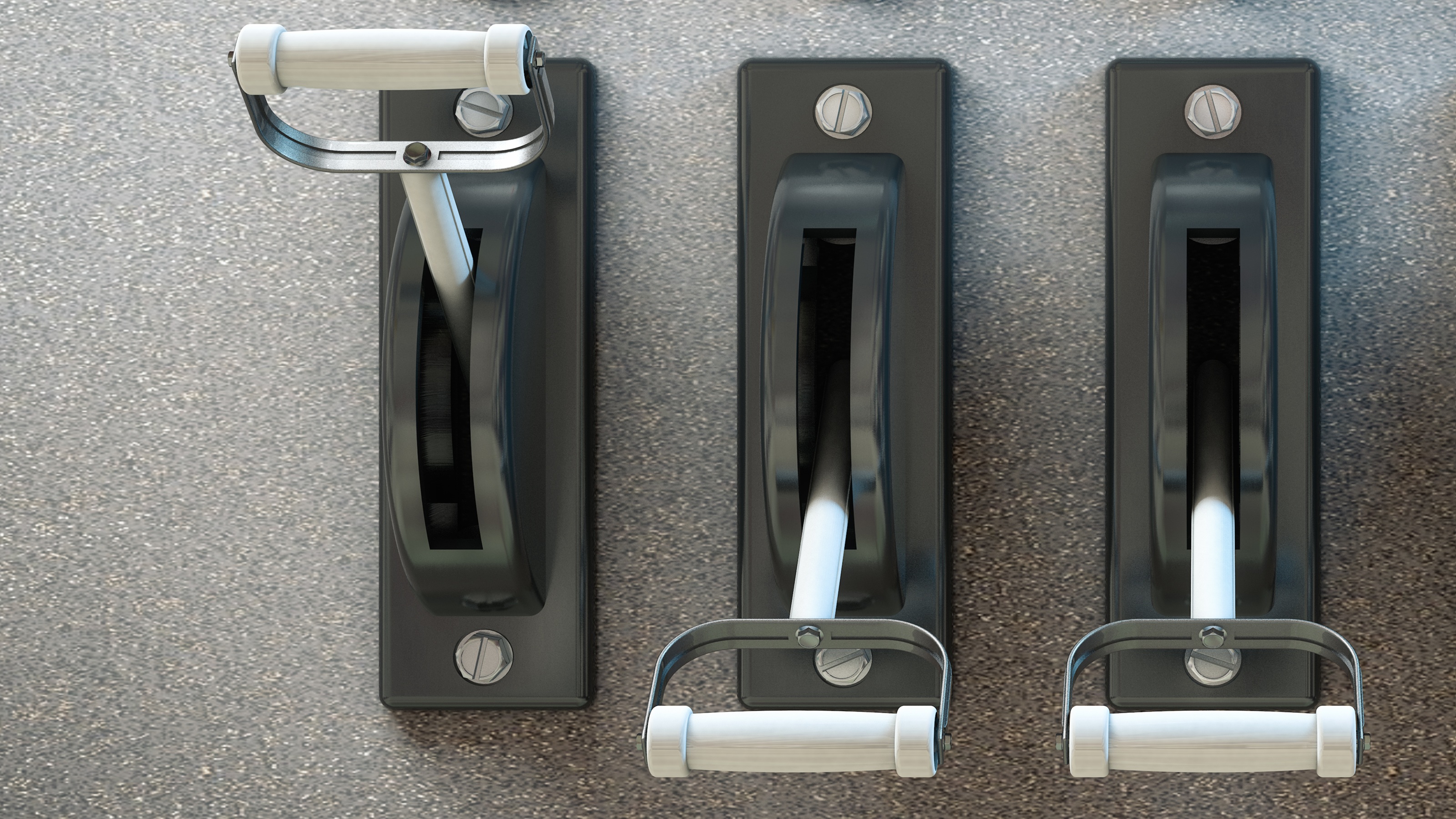3 Ways to Benefit from a Roth IRA Under New Tax Law, Including a ‘Mega Backdoor Roth’
The tax benefits to Roth IRAs have always been enticing, but now they're even more attractive. Even if you think you make too much to take advantage, there are ways to get in the game.


The Roth IRA is popular once again. The new lower income tax rates make conversions to a Roth more favorable than they used to be. In addition, the low tax rates are set to expire in 2025, and there is an expectation that higher rates could be on the horizon. This also favors the Roth IRA, whose qualified distributions are income-tax free, unlike with a traditional IRA.
Income restrictions can stand in the way of some people from pumping money directly into a Roth IRA, as people are phased out when their incomes exceed the $203,000 threshold (2019 marrying filing jointly limit, or $137,000 if single). However, there are indirect ways to fund a Roth IRA. Here are three examples:
Strategy #1: Mega Backdoor Roth IRA
First, make the maximum contribution to a 401(k) plan, which may be much higher than you realize. In 2019 the maximum tax-deductible contribution to an employer’s 401(k) is $19,000 per person per year, or $25,000 with a “catch-up” contribution if over age 50. However, you may be able to go beyond that. If your employer allows after-tax contributions to your 401(k), you also get the advantage of the $56,000 limit for 2019. This figure represents an overall cap. That means it includes your $19,000 (pretax or Roth) salary deferrals plus any contributions from your employer, but not catch-up contributions.
From just $107.88 $24.99 for Kiplinger Personal Finance
Be a smarter, better informed investor.

Sign up for Kiplinger’s Free Newsletters
Profit and prosper with the best of expert advice on investing, taxes, retirement, personal finance and more - straight to your e-mail.
Profit and prosper with the best of expert advice - straight to your e-mail.
Why would anyone contribute after-tax dollars to a 401(k)? For two reasons. First, after-tax dollars in a 401(k) grow tax-deferred, the earnings are not taxed until withdrawn. This means more of your money is reinvested and growing, since taxes are not a drag on the return. True, you can get tax-deferral in an annuity or IRA, but there's a big difference.
The real kicker is after-tax contributions to a 401(k) can be rolled into a Roth IRA upon retirement or separation of service. For those who are currently phased out of contributing to a Roth IRA because their income is too high, this is huge. There are no income limitations to making after-tax contributions to a 401(k) and then moving that money to a Roth IRA when you leave the company.
One caveat is the earnings on the after-tax contributions to a 401(k) are taxable upon withdrawal. However, the earnings on the after-tax contribution plus the pre-tax or regular contributions to the 401(k) can be rolled into an IRA tax-free upon leaving the company and the tax-deferral would continue.
An Example of What This Would Look Like
Let's assume Bob is 55 and contributes the $19,000 plus the over-50 catch-up to his 401(k) for a total of $25,000. Bob has more room to save this year, because the kids are out of college and he has the cash flow. He would like to fund a Roth IRA because he likes the idea of some of his retirement income coming out tax-free, unlike in his traditional 401(k), of which all of his withdrawals are subject to income tax. However, Bob is phased out of directly funding a Roth IRA because his income is too high.
So, Bob gives the mega-backdoor Roth IRA a try, given there are no income limitations with funding after-tax contributions in a 401(k). Bob decides to save an additional $10,000 in after tax-contributions in the same 401(k).
Bob continues to do this each year for the next five years, building up his after-tax contributions to $50,000. Eventually he retires and wants to move his money out of the company 401(k) plan. He requests two checks, one for the after-tax contributions and one for the regular or pre-tax contributions plus the earnings on the after-tax contributions. He deposits his after-tax check into a Roth IRA and moves the pre-tax money plus the after-tax earnings into a regular IRA.
Had Bob only made direct contributions to a Roth IRA — assuming he qualified from an income standpoint — he would have been subject to the 2019 annual maximum of $7,000 (the $6,000 limit plus $1,000 for being over 50). But by taking advantage of this mega backdoor Roth IRA strategy via his 401(k), Bob significantly increased what he could potentially save in a Roth IRA on a yearly basis.
Fast forward to later in retirement, Bob now has a pool of money in his Roth IRA that he can access tax-free — unlike his traditional 401(k). This Roth money could help him keep his future income tax liability down since withdrawals are tax-free. His Roth IRA is also not subject to the required minimum distribution rules, meaning he is not forced to take his money out at 70½.
What to Watch for with This Strategy
You need to ensure you have the liquidity necessary to pull this off. It doesn't make sense to sock away more money in a qualified plan pre-tax or post-tax if that dries up your liquidity and leaves you cash poor. Make sure you have an emergency reserve fund.
Putting more money in a retirement plan means more money locked up until age 59½, which is the age at which you can make a withdrawal from a 401(k) without paying an IRS penalty (contributions to Roth IRAs can be withdrawn at any time, penalty-free and tax-free, but gains withdrawn before age 59½ are subject to penalty). People need to be comfortable with their cash flow to do this.
Also, you should evaluate other uses of your money besides an after-tax 401(k) — like college funding, paying down the mortgage or other debt. All else being equal, if you can swing it, the mega backdoor Roth IRA is a tremendous way to supercharge your Roth savings.
Strategy #2: Backdoor Roth IRA
You can do this same strategy on a smaller scale by contributing to a non-deductible IRA. Individuals prohibited from depositing directly into a Roth IRA can deposit the maximum amount permitted ($6,000 under age 50 and $7,000 over age 50 for 2019) to a non-deductible IRA. The backdoor Roth IRA is completed by immediately converting the non-deductible IRA into a tax-free Roth IRA.
This strategy will work better if you do not have any existing traditional IRAs to avoid the pro-rata rule. That rule says that you must aggregate all your IRAs to determine how much income tax you owe when you convert. If you have no other IRAs and you open a $6,000 non-deductible IRA and then convert it, you only owe tax on the earnings, if any. By contrast, if you have a $94,000 traditional IRA (pre-tax contributions), and you convert a $6,000 non-deductible contribution to a new Roth IRA, the conversion would be 94% taxable. Be aware of this strategy if you have other pre-tax IRAs outstanding.
Strategy #3: Convert a traditional IRA to a Roth if it makes sense
There are no income limits on converting a traditional or pre-tax IRA to a Roth IRA, but this only makes sense if you think your income tax rate will be higher in the future. Since the 2017 tax cuts, many taxpayers are now in a lower tax bracket than in years prior. However, the tax cuts are set to expire in 2025. If one was going to ever convert to a Roth IRA, all else being equal, it'd be before the tax rates increase in 2025. The problem with converting a pre-tax IRA to a Roth is the income tax is due on the full amount converted (unless you have any after-tax contributions). For example, if you have a $100,000 traditional IRA consisting only of pre-tax dollars then if you converted it to a Roth it's like you have an additional $100,000 of taxable income. This is on top of any other salary or business income you may already have for the year. The tax bite can be significant, especially if the conversion pushes you into a higher tax bracket or causes you to phase out of certain deductions.
However, the IRS does allow you to space out the conversion. For instance, using the same $100,000 IRA, you can convert $16,600 a year to a Roth IRA for the next six years till 2025 when the tax cuts expire. If you space the conversions out over time, that will possibly lower the amount of taxable income you have for each year than if you converted the full amount in one year. This may help keep you in the same tax bracket as if you didn’t convert.
Why would anyone ever convert to a Roth if they incur all that tax? One reason is because there are no required minimum distributions on a Roth IRA. Unlike traditional IRAs, which require you to take money out after age 70½, a Roth can keep on growing and you never have to touch it unless you decide to withdraw money, not the government deciding for you.
This is especially good for people who feel they may never use their Roth in retirement and want to leave it to their kids. Granted, the kids will have to take money out when they inherit a Roth (special rules apply to inherited Roth IRAs) but the principal left in the account grows tax-free and the distributions are tax-free. Imagine not having to pull money out of your Roth IRA during your lifetime since there are no mandatory distributions and letting the kids withdraw the money tax-free? The tax-savings could be huge.
Advantages to Converting to a Roth
- Lower tax rates.
- Not subject to 3.8% net investment tax.
- Could save considerable money in taxes in the long run.
- Contributions (but not earnings) could be withdrawn tax & penalty free at any time, even if you’re under the age of 59½.
- No required minimum distributions at age 70½.
Disadvantages to Converting to a Roth
- Upfront tax bill on the amount you convert. Ideally you want to pay the tax with other money, not from the IRA.
- Conversion could push you into a higher tax bracket.
- Conversion could trigger other income subject to the 3.8% net investment tax.
- Recharacterization of prior conversions has been eliminated.
The Bottom Line
All in all, the Roth IRA remains a powerful financial planning tool. Given qualified withdrawals are income tax-free and there are no required minimum distributions, the Roth IRA can be a retiree’s best friend. Plus, now more than ever there are opportunities to fund a Roth, like the back-door strategies mentioned above.
The real key is to have a plan, including how and where to save like the Roth IRA. It's the little things that add up over time. And to me that is the real value of working with a professional that can help you uncover the best use of your money. As I tell my clients, in financial planning there is no magical unicorn or holy grail, there are only simple, small strategies that, collectively, if executed properly, add up to real dollars over time.
Investment advisory and financial planning services are offered through Summit Financial LLC, an SEC Registered Investment Adviser, 4 Campus Drive, Parsippany, NJ 07054. Tel. 973-285-3600 Fax. 973-285-3666. This material is for your information and guidance and is not intended as legal or tax advice. Clients should make all decisions regarding the tax and legal implications of their investments and plans after consulting with their independent tax or legal advisers. Individual investor portfolios must be constructed based on the individual’s financial resources, investment goals, risk tolerance, investment time horizon, tax situation and other relevant factors. Past performance is not a guarantee of future results. The views and opinions expressed in this article are solely those of the author and should not be attributed to Summit Financial LLC. Links to third-party websites are provided for your convenience and informational purposes only. Summit is not responsible for the information contained on third-party websites. The Summit financial planning design team admitted attorneys and/or CPAs, who act exclusively in a non-representative capacity with respect to Summit’s clients. Neither they nor Summit provide tax or legal advice to clients. Any tax statements contained herein were not intended or written to be used, and cannot be used, for the purpose of avoiding U.S. federal, state or local taxes.
Profit and prosper with the best of Kiplinger's advice on investing, taxes, retirement, personal finance and much more. Delivered daily. Enter your email in the box and click Sign Me Up.

Michael Aloi is a CERTIFIED FINANCIAL PLANNER™ Practitioner and Accredited Wealth Management Advisor℠ with Summit Financial, LLC. With 21 years of experience, Michael specializes in working with executives, professionals and retirees. Since he joined Summit Financial, LLC, Michael has built a process that emphasizes the integration of various facets of financial planning. Supported by a team of in-house estate and income tax specialists, Michael offers his clients coordinated solutions to scattered problems.
-
 Stocks Close Out Strong Month With Solid Amazon Earnings: Stock Market Today
Stocks Close Out Strong Month With Solid Amazon Earnings: Stock Market TodayAmazon lifted its spending forecast as its artificial intelligence (AI) initiatives create "a massive opportunity."
-
 I Just Paid Off My Car. Can I Downgrade My Car Insurance Now?
I Just Paid Off My Car. Can I Downgrade My Car Insurance Now?You've gotten rid of that car payment. Can you save even more by downgrading your car insurance? Here's what to consider.
-
 Are You Retired? Here's How to Drop the Guilt and Spend Your Nest Egg
Are You Retired? Here's How to Drop the Guilt and Spend Your Nest EggTransitioning from a lifetime of diligent saving to enjoying your wealth in retirement tends to be riddled with guilt, but it doesn't have to be that way.
-
 Government Shutdown Freezes National Flood Insurance Program: What Homeowners and Buyers Need to Know
Government Shutdown Freezes National Flood Insurance Program: What Homeowners and Buyers Need to KnowFEMA's National Flood Insurance Program is unavailable for new customers, increased coverage or renewals during the government shutdown.
-
 Separating the Pros From the Pretenders: This Is How to Tell if You Have a Great Adviser
Separating the Pros From the Pretenders: This Is How to Tell if You Have a Great AdviserDo you leave meetings with your financial adviser feeling as though you've been bulldozed into decisions or you're unsure of what you're paying for?
-
 Five Downsides of Dividend Investing for Retirees, From a Financial Planner
Five Downsides of Dividend Investing for Retirees, From a Financial PlannerCan you rely on dividend-paying stocks for retirement income? You'd have to be extremely wealthy — and even then, the downsides could be considerable.
-
 I'm a CPA: Control These Three Levers to Keep Your Retirement on Track
I'm a CPA: Control These Three Levers to Keep Your Retirement on TrackThink of investing in terms of time, savings and risk. By carefully monitoring all three, you'll keep your retirement plans heading in the right direction.
-
 Debunking Three Myths About Defined Outcome ETFs (aka Buffered ETFs)
Debunking Three Myths About Defined Outcome ETFs (aka Buffered ETFs)Defined outcome ETFs offer a middle ground between traditional equity and fixed-income investments, helping provide downside protection and upside participation.
-
 This Is Why Judge Judy Says Details Are Important in Contracts: This Contract Had Holes
This Is Why Judge Judy Says Details Are Important in Contracts: This Contract Had HolesA couple's disastrous experience with reclaimed wood flooring led to safety hazards and a lesson in the critical importance of detailed contracts.
-
 A Lesson From the School of Rock (and a Financial Adviser) as the Markets Go Around and Around
A Lesson From the School of Rock (and a Financial Adviser) as the Markets Go Around and AroundIt's hard to hold your nerve during a downturn, but next time the markets take a tumble, remember this quick rock 'n' roll tutorial and aim to stay invested.